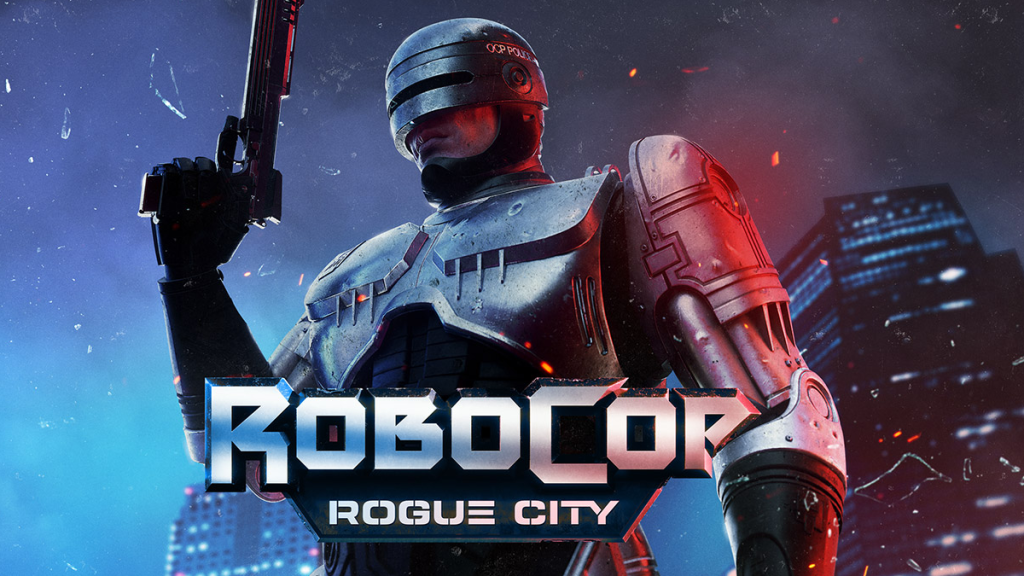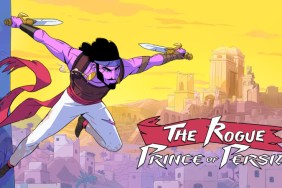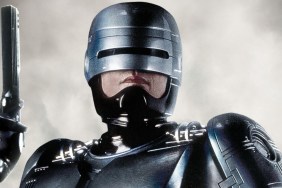Few cinematic properties entertain me as much as Paul Verhoeven‘s 1987 RoboCop. Violent, gritty, and satirical, the classic sci-fi adventure remains a crisply designed and pertinent film. It’s clever enough to blend not-so-subtle social commentary with thrilling entertainment. You pick it apart from any angle and it holds up.
Despite its fascinating premise, compelling ideas, and unique characters, RoboCop didn’t require a sequel. It’s a standalone picture that effectively presents the hero’s journey, as seen through the eyes of Alex Murphy. At the end of the film, he succeeds in killing the bad guys, rediscovering his soul, and confronting the moral and existential questions raised by his existence—end of story.
Hollywood being Hollywood, RoboCop 2 brings Murphy back and pits him against more giant robots and even more vile baddies with diminishing results before destroying the character for good in the awful RoboCop 3. Murphy lived on in comic book spinoffs, novels, and video games, notably 1993’s silly but fun RoboCop versus Terminator.
Later, in 2014, MGM rebooted RoboCop into something more accessible to general audiences. Starring Joel Kinnaman, this iteration was more Batman than twisted sci-fi and nixed Verhoeven’s dark satire for a more straightforward action picture with mediocre results. A few years later, District 9 director Neill Blomkamp jumped aboard a proposed sequel that would ignore RoboCop 2 and 3 and picked up immediately after the original.
Alas, the project never came about and lives in Hollywood limbo.
No matter. Thanks to Teyon, the same company that delivered the stellar Terminator: Resistance in 2019, RoboCop returns in Rogue City, a first-person shooter that captures the spirit of Verhoeven’s classic better than any of the sequels, spinoffs, and remakes released over the last 35 years. No, it’s not exactly a groundbreaking experience. But I’ve enjoyed my experience so far, even if Rogue City more or less confirms how hard it is to make a follow-up to RoboCop.
Immersive Gameplay
By no means do I consider myself a hardcore gaming fan. (I’m still playing Call of Duty: Black Ops III Zombies, for cripe’s sake!) Ergo, I’m not a snob regarding graphics and controls. I adapt to whatever the game presents and try to enjoy the experience regardless of bugs and glitches.
That’s the best way to approach Rogue City. While beautifully designed, the graphics are rather clunky, with textures taking a few seconds to load on my PS5 — particularly during the cinematic cut scenes. Villains are of the cut-and-paste variety—they look and sound alike—and don’t present much threat. Tactically, they aren’t very elusive either. Enemies favor firing RoboCop while standing exposed in an open arena instead of ducking and hiding like a sane person would do.
There’s also not a lot of fluidity in the gameplay. Despite the open-world aspect, levels are disconnected, meaning RoboCop doesn’t hop in his car and drive to a checkpoint. (This isn’t Cyberpunk 2077.) Instead, players enter their vehicle, the scene fades to black, and RoboCop emerges in a new location. Terminator: Resistance used the same method to transport players to different maps, resulting in frustrating loading times and a slightly disjointed narrative.
Surprisingly, characters like Officer Anne Lewis look great. However, mouths rarely match their words, which is baffling in 2023.
Yet despite these flaws RoboCop: Rogue City — like Terminator: Resistance — is still a lot of fun. In many respects, it feels like an old-school game made in the early 2000s or the type of shooter you would find in an arcade. The bad guys are simplistic, but I never tire of blowing them to gory bits. In many respects, this game feels more like the original Doom (circa 1993) than Call of Duty, and I mean that in a good way. Rogue City is the type of game that doesn’t require many brain cells. Turn it on and enjoy the chaos.
I also liked the design of Detroit. I’m only about halfway through the storyline, so there’s a chance the world opens up even more as I progress, but currently, RoboCop spends much of his time laying waste to criminals in the outskirts. Skyscrapers loom large in the background, but we’re not traversing city streets or engaging in shootouts amongst the general public. I’m fine with this approach, though more variety would be nice.
Also, RoboCop is easy to control. His only abilities are forward, back, point, shoot, recover, reload, scan, and run. There aren’t any special powers or silly gimmicks—at least, not yet. He’s a machine who shrugs off strategy in favor of a head-on approach. Thankfully, he can sustain quite a bit of damage.
Violence
Rogue City doesn’t shy away from violence. As stated above, the game plays like the original Doom. Machine guns rip limbs off bad guys, while assault rifles blow them into a chunky marinara. RoboCop can also grab and toss people across the room or at unsuspecting bad guys.
Destructive environments are a particular highlight. Rooms are packed with breakable objects, including monitors that inexplicably explode like grenades when thrown. Propane tanks also do a lot of damage, and there are plenty of glass rooms to destroy during the big action set pieces. I spent a good 30 minutes destroying all the lights in a hideout and would gladly do it again.
Again — game snobs may snarl at every container or door that doesn’t explode on contact. Regardless, I was satisfied with Teyon’s efforts.
Plot
On a negative note, Rogue City proves why making another RoboCop movie is nearly impossible. The game mostly hits all the same beats as the original film, oddly choosing to return Murphy to his robotic state rather than the more genial human he became at the end of RoboCop. He’s mostly soulless, though you can choose to let criminals walk or face the time. These choices seem to affect the story, or, at least, how supporting characters interact with you.
Teyon made the right choice here. At the end of RoboCop, Murphy sheds his mask and becomes primarily human again. While it would have been nice to see a continuation of his human story, I want to play as RoboCop — not Murphy.
Narratively, Rogue City makes the same mistakes as RoboCop 2 and opts for bigger and louder action instead of intelligent and clever storytelling. We don’t glean much more from Murphy in the game—at least, so far—but touch on all the same beats from the original film.
Terminator: Resistance delivered the threequel James Cameron’s series deserved, wisely placing its action in the future amongst new characters. Rogue City functions more as a requel, in that it’s a sequel that also feels like a remake/reboot. I appreciate the slavish devotion to Verhoeven’s film, but I’m also a little disappointed that Teyon couldn’t find a unique way to expand Murphy’s story.
Final Thoughts
RoboCop: Rogue City works as an old-fashioned shooter that entertains despite its flaws. It doesn’t expand its subject’s lore like Terminator: Resistance did, but it still presents a perfectly satisfying return to Verhoeven’s dark and violent universe.
Keep your expectations in check, and you’ll enjoy the ride.










